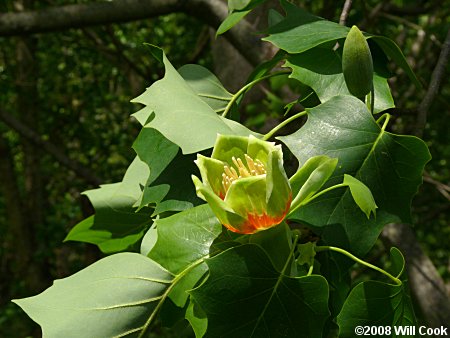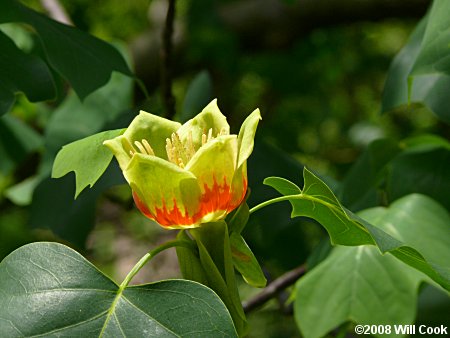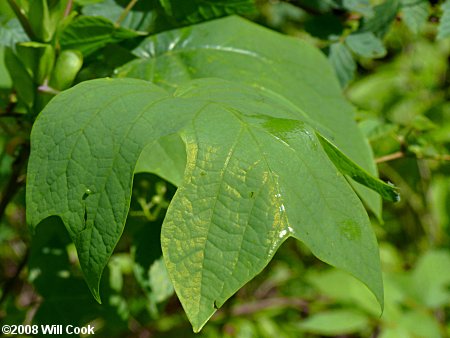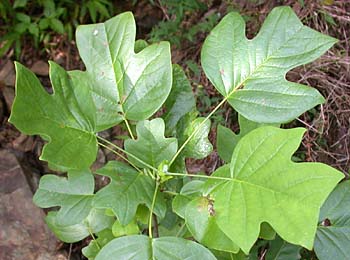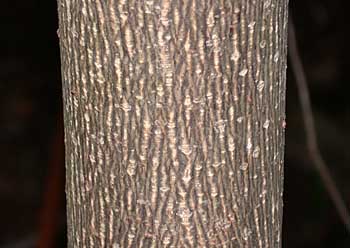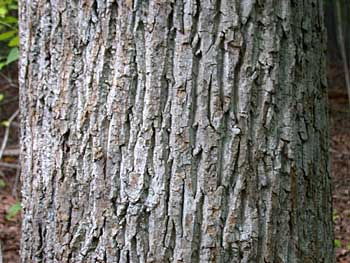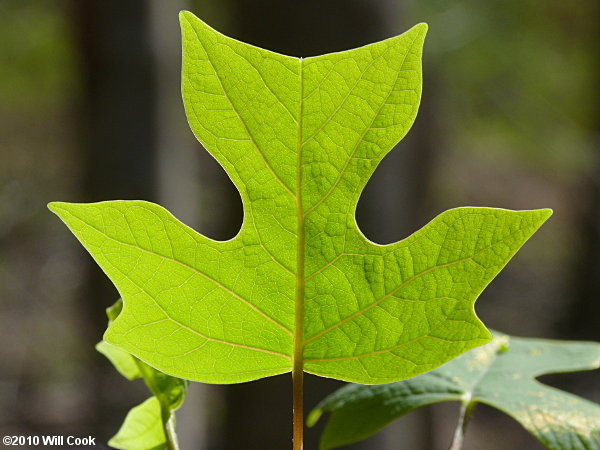
| Tuliptree is one of our largest, most common, and familiar trees. It's most abundant in bottomlands and often associates with Sweetgum. The leaves, buds, flowers, fruits, and bark are unique — it would be difficult to confuse it with any other species (apart from the very similar Chinese version). Newly emerged leaf. Carroll Co., VA 4/11/10.
|
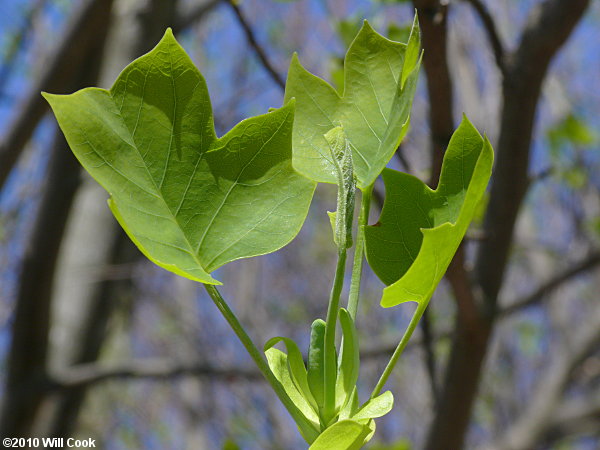
| Newly emerged leaves. Carroll Co., VA 4/11/10.
|
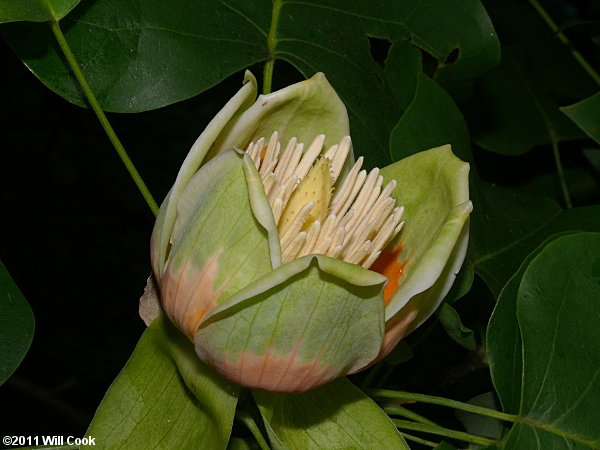
| The flowers are somewhat reminiscent of tulips, giving the tree its name. They may be difficult to see before they fall to the ground, since they are often 100 feet or more overhead in the canopy. Carroll Co., VA 5/22/2011.
|
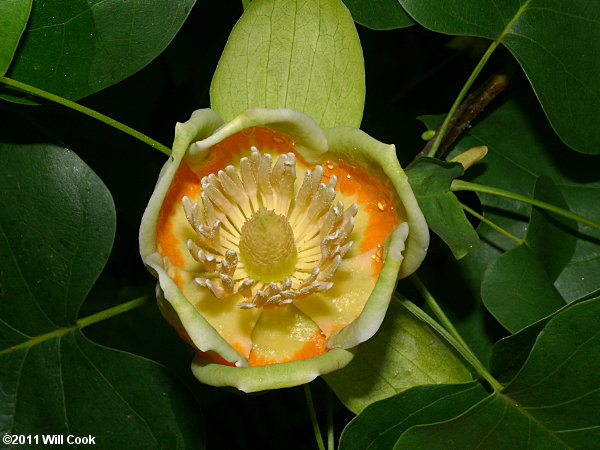
| Carroll Co., VA 5/22/2011.
|




